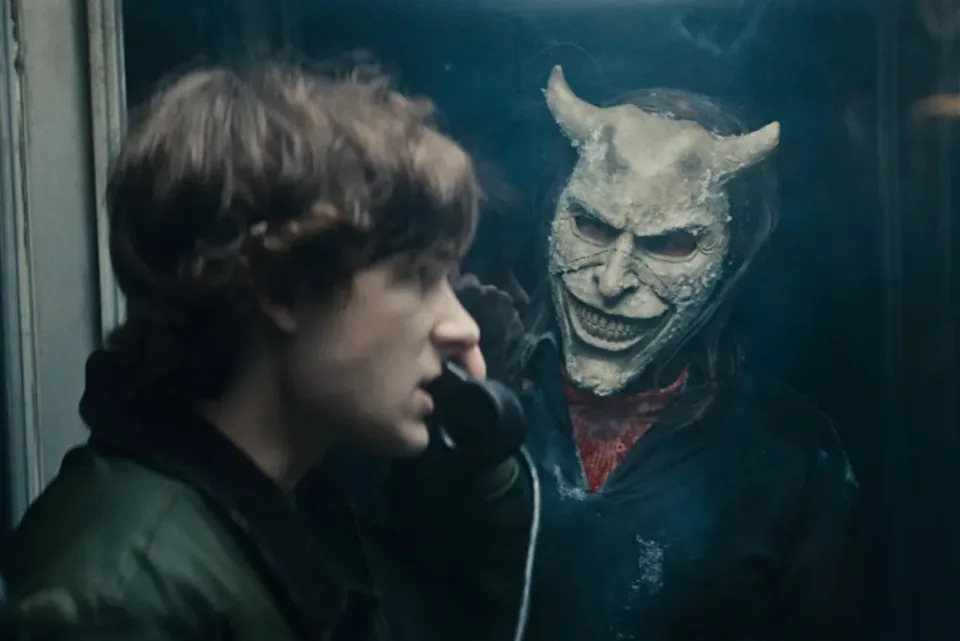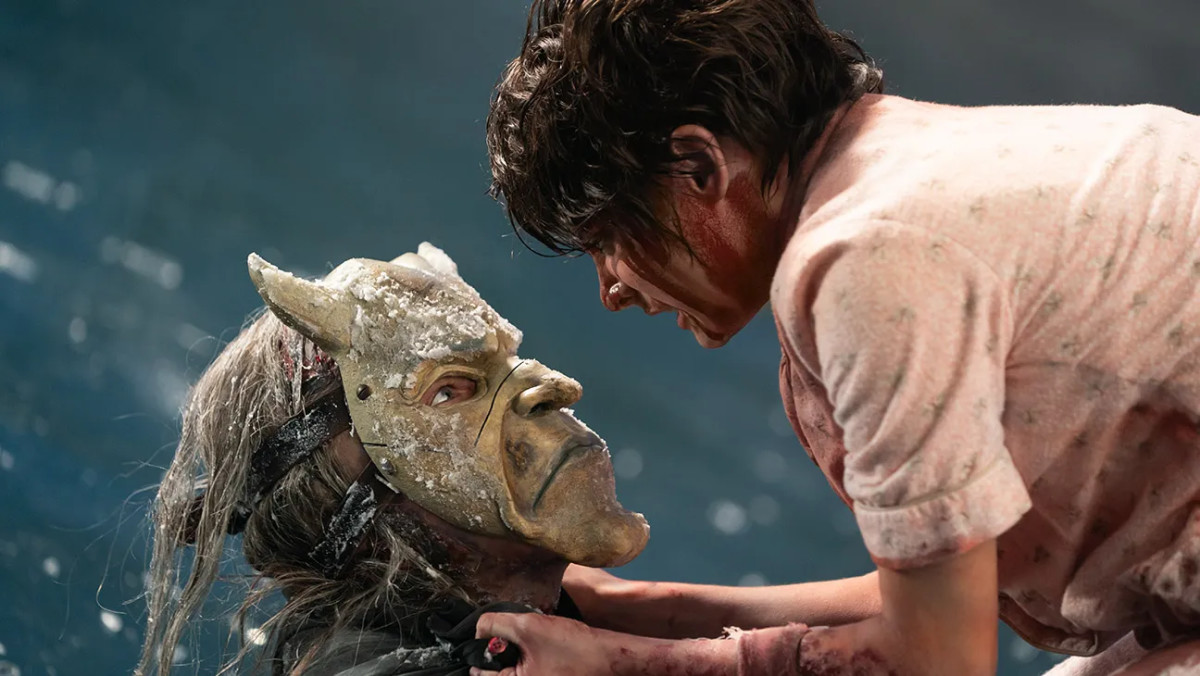Throughout a nearly three-decade career, director Scott Derrickson has consistently crafted chilling horror films cobbled together from old tropes, which, at least four-fifths of the time, he spins into effectively remixed facsimiles. None of his movies have been achingly original, but they’ve always buzzed with an electricity and terror that is often elusive to the genre. The Black Phone, his 2022 thriller scripted by C. Robert Cargill from a short story by Joe Hill (son of Stephen King), is to this point Derrickson’s masterpiece.
Black Phone Is a Modern Classic
A dark and grimy ‘70s-set tale of a child killer known as the Grabber (Ethan Hawke) who gets more than he bargained for when he abducts young Finn (Mason Thames, recently of How to Train Your Dragon), the movie was thoughtful as far as studio horror goes and was aided by the surprisingly tender central relationship between Finn and his sister, Gwen (Madeleine McGraw). Due to some particularly sharp editing, the finale of The Black Phone is one of the rare instances in which an exploitation programmer provokes a tear for the right reasons. In between relatively anodyne studio plays like Doctor Strange (2016) and The Gorge (2024), Derrickson has cemented himself as a horror auteur. Notably, in the last decade or so, he’s built upon the exceptional promise he displayed with 2012’s Sinister, also starring Hawke, and delivered a handful of quietly radical pictures.
The Black Phone 2 continues that trajectory, though it’s more of a mixed bag than you might hope. It’s an admirable and entertaining movie, formally experimental and occasionally nightmarish, though it’s particularly inconsistent and doesn’t pack the emotional satisfaction of the first, though it tries. It picks up three years after the original, with Finn and Gwen still trying to recover from their encounter with the Grabber. In the first film, Gwen, having inherited some psychic abilities possessed by her late mother, assisted police in finding her brother, and now the siblings have a degree of local fame with which they must contend. When she begins experiencing visions of a snowy Christian camp that their mother once attended, Gwen convinces Finn to take a job with her at the site so that they can solve the mystery.

Universal Pictures/Blumhouse
But the Sequel Is Tonally Confused
Whereas the first Black Phone functioned as well as it did largely because of its streamlined plot, the second film overloads itself with so many convolutions that it takes a half hour for the story to actually begin and an hour for Hawke’s villain to properly arrive. The particulars of why the kids are called to the camp and how it relates to them/the Grabber/the first movie is at once predictable and tenuous, and the editing is all over the shop. The first 30 minutes, in particular, struggle to find a rhythm, oscillating unevenly between characters’ points of view. Eventually, the movie finds its feet, but it takes about 75 minutes of the 115-minute running time.
Part of the issue is that Hawke, a supporting character in the first film but very much responsible for the movie’s essence, is sidelined here to the point of a cameo. That wouldn’t be an issue if the movie weren’t markedly more electric when he’s onscreen, but it is. When he departs, we feel his absence in a way we did not in the first movie. The filmmakers rely too much on Hawke’s presence from The Black Phone to sell his villainy here. Taken on its own terms, The Black Phone 2 lacks a compelling villain for most of its length. When he materializes, the movie fails to give the audience ample reason to fear him. Because the Grabber was killed in the first movie, and so here is a ghoul of some stripe, Hawke’s real face never appears onscreen. Instead, he takes the appearance of a deteriorating cadaver, leading to a positively goofy finale set on a frozen lake, which boasts one standout shot cribbed from Curtains (1983).
Still, It’s Undoubtedly Worth Seeing
Despite its narrative deficiencies, Derrickson deserves praise for delivering such a good-looking, thoughtful horror movie. Even if it doesn’t hit all of the marks or eloquently express the many points it wants to make, the expended effort alone feels like manna in a recent oasis of spooky movies. Switching between traditional digital camerawork for the real world and Super 8 for the dream sequences, which comprise a surprising amount of the movie, Derrickson creates an uneasy mix between documentary-style realism and stylized nightmare. Derrickson pioneered this trick for the cursed videotapes in Sinister, and, remarkably, he’s still getting mileage out of it over 10 years later. The score, by the director’s son, Atticus Derrickson, is impressively gloomy and oppressive. Likewise, there’s an ace use of the album version of Pink Floyd’s Another Brick in the Wall which casts a haunting spell that the rest of the movie can’t quite conjure.
The most interesting aspect of Black Phone 2 comes at the tail end of the credits in the form of a disclaimer informing audiences that this film cannot “be used to train AI.” That’s pretty rich coming after a movie that’s cobbled together from the most famous bits of The Thing (1982), Nightmare on Elm Street 3: Dream Warriors (1987), and Guillermo del Toro’s The Devil’s Backbone (2001). But there is a glimmer of originality and an intent to Derrickson’s sequel which shouldn’t be ignored, something which so many of his peers fail to include in their own work. There are many things to like about Black Phone 2, but unfortunately, it just doesn’t hold a candle to its predecessor.
The Black Phone 2 is in cinemas nationwide.
This story was originally reported by Men’s Journal on Oct 17, 2025, where it first appeared in the Entertainment section. Add Men’s Journal as a Preferred Source by clicking here.

